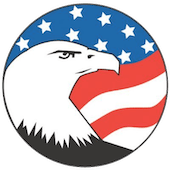Reform Party of the United States of America facts for kids
Quick facts for kids
Reform Party of the
United States of America |
|
|---|---|
 |
|
| Chairperson | Nicholas Hensley |
| Founder | Ross Perot |
| Founded | 1995 |
| Headquarters | Dallas, Texas |
| Membership | |
| Ideology | Populism Radical centrism Fiscal conservatism Centrism Liberalism Autarky |
| Political position | Center |
| Colors | Purple |
| Elected offices |
11 / 519,682
|
The Reform Party of the United States of America (RPUSA), also known as the Reform Party, is a political party in the United States. It was started in 1995 by businessman Ross Perot.
Perot created the party because he felt many Americans were unhappy with politics. He believed the two main parties, the Republicans and Democrats, were not solving important problems.
In the 1992 presidential election, Perot ran as an independent candidate and won 18.9% of the popular vote. This success led him to create the Reform Party. When he ran for president again in 1996 as the Reform Party candidate, he won 8.4% of the vote. No other candidate from a smaller party has won that much of the vote since.
The party's biggest win was in 1998, when Jesse Ventura was elected governor of Minnesota. However, Ventura left the party while he was still governor. Over the years, disagreements and problems inside the party caused it to become much smaller and less powerful.
Contents
The Ross Perot Movement
The Reform Party started because of Ross Perot's popular 1992 presidential campaign. Running as an independent, he was seen as a serious candidate who could possibly win. This was rare for someone not in a major party.
Perot talked a lot about money issues, like the country's debt. He also wanted to reform the government by setting limits on how long politicians could serve. Many people supported him because they felt he was talking about real problems the other parties were ignoring.
At one point, a poll showed Perot was leading. But he suddenly dropped out of the race, saying his family had been threatened. He later rejoined the campaign but ended up with 18.9% of the vote. This was a very high number for an independent candidate.
Founding the Party
In 1995, the people who had supported Perot in 1992 came together to form a new political party. They wanted a real alternative to the Republicans and Democrats. They called it the "Reform Party."
Their goal was to get the party on the ballot in all 50 states so people everywhere could vote for their candidates. They succeeded, though it took a lot of work and even some legal challenges.
The 1996 Presidential Election
The Nomination Campaign
When it was time for the 1996 election, Perot at first said he wouldn't run. He wanted someone else to be the Reform Party's candidate. The only person who stepped up was Dick Lamm, a former governor of Colorado.
However, Perot later decided to run after all. This upset some people who felt he was overshadowing Lamm. In the end, Perot won the party's nomination and chose economist Pat Choate as his running mate.
Not Allowed in the Debates
Between 1992 and 1996, the rules for who could be in presidential debates were changed. Because of these new rules, Perot was not allowed to participate in the 1996 debates. This was a big setback for his campaign, as he had done very well in the 1992 debates.
Even though most Americans wanted him in the debates, the commission in charge refused to let him join. Perot had to buy TV time for "commercials" to share his ideas. He and Choate received 8% of the vote in the election.
A Time of Decline
The 1998 Mid-Term Elections
The party had a moment of success in 1998. Jesse Ventura was elected governor of Minnesota as a Reform Party candidate. This was a huge victory and made the Reform Party the third-largest party in the country at the time.
The 2000 Presidential Election
For the 2000 election, the party's candidate was set to receive over $12 million in federal campaign money. This was because of Perot's strong performance in 1996.
Donald Trump briefly considered running for the Reform Party. He said he was a conservative but disagreed with another potential candidate, Pat Buchanan. Trump later left the race, saying he did not like the direction the party was heading. Jesse Ventura also left the party around this time.
After a heated fight within the party, Pat Buchanan won the nomination. But another group held its own convention and nominated a different candidate. The matter went to court, and Buchanan was declared the official nominee, getting the campaign funds. He received only 0.4% of the vote in the election. This poor result meant the party lost its automatic funding for future elections.
Later Years
After 2000, the Reform Party struggled. It had lost much of its support and funding.
In the 2004 election, the party decided to support independent candidate Ralph Nader. However, it could only get him on the ballot in seven states.
Over the next several years, the party continued to face internal disagreements and legal battles over who was in charge. It nominated candidates for president in 2008, 2012, 2016, and 2020, but none of them received a significant number of votes.
In 2024, the party endorsed Robert F. Kennedy Jr. for president. However, Kennedy later dropped out of the race and supported Donald Trump.
What the Reform Party Believes
The Reform Party's platform, or list of goals, includes:
- Creating a balanced budget for the federal government and paying off the national debt.
- Changing the rules for how political campaigns are funded to reduce the influence of money.
- Enforcing existing immigration laws.
- Setting term limits for members of the U.S. Congress.
- Making changes to the election system, including making Election Day a national holiday.
The party has tried to avoid taking strong positions on social issues. The goal was to bring together people with different views to work on economic and government reforms.
Best Election Results
| Office | Percent | District | Year | Place | Candidate |
|---|---|---|---|---|---|
| President |
14.19%
|
Maine | 1996 | 3rd | Ross Perot |
|
13.56%
|
Montana | 1996 | 3rd | ||
|
12.71%
|
Idaho | 1996 | 3rd | ||
| US Senate |
15.42%
|
Mississippi | 2002 | 2nd | Shawn O'Hara |
|
8.37%
|
Kansas | 2002 | 3rd | George Cook | |
|
6.98%
|
Minnesota | 1996 | 3rd | Dean Barkley | |
| US House |
33.70%
|
Florida District 5 | 1998 | 2nd | Jack Gargan |
|
21.09%
|
California District 21 | 1998 | 2nd | John Evans | |
|
20.99%
|
Mississippi District 1 | 2004 | 2nd | Barbara Dale Washer | |
| Governor |
36.99%
|
Minnesota | 1998 | 1st | Jesse Ventura |
|
15.33%
|
Kentucky | 1999 | 3rd | Gatewood Galbraith | |
|
2.08%
|
New Hampshire | 1996 | 3rd | Fred Bramante |
Presidential Tickets
| Year | Presidential nominee | Home state | Previous positions | Vice presidential nominee | Home state | Previous positions | Votes | Notes |
|---|---|---|---|---|---|---|---|---|
| 1996 | 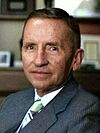 Ross Perot (campaign) |
Businessman Candidate for President of the United States (1992) |
 Pat Choate |
Economist | 8,085,294 (#3) (8.4%) 0 EV |
|||
| 2000 | 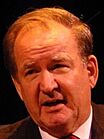 Pat Buchanan (campaign) |
White House Director of Communications (1985–1987) Candidate for President of the United States (1992; 1996) |
Ezola Foster |
Activist Candidate for California's 48th State Assembly district (1986) |
448,895 (#4) (0.4%) 0 EV |
|||
| 2004 | 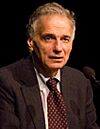 Ralph Nader (campaign) |
Lawyer, activist Candidate for President of the United States (1996; 2000) |
 Peter Camejo |
Candidate for Mayor of Berkeley (1967) Candidate for President of the United States (1976) Candidate for Governor of California (2002; 2003) |
465,151 (0.4%) 0 EV |
|||
| 2008 |
Ted Weill |
Nominee for United States Senator from Mississippi (1996) |
Frank McEnulty | Businessman | 481 (0.0004%) 0 EV |
|||
| 2012 | Andre Barnett | Entrepreneur | Ken Cross | Engineer, businessman | 962 (0.001%) 0 EV |
|||
| 2016 |  Rocky De La Fuente (campaign) |
Businessman | 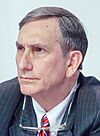 Michael Steinberg |
Lawyer Candidate for Florida's 47th State House of Representatives district (2002; 2010) Candidate for Florida's 11th congressional district (2006) |
33,136 (#9) (0.02%) 0 EV |
|||
| 2020 |  Rocky De La Fuente (campaign) |
Businessman Candidate for President of the United States (2016) |
 Darcy Richardson |
Historian Author 2018 Reform Party Nominee for Governor of Florida |
88,238 (#5) (0.06%) 0 EV |
|||
| 2024 | 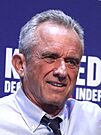 Robert F. Kennedy Jr. (campaign) |
Attorney, activist | 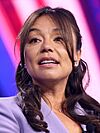 Nicole Shanahan |
Attorney, technologist | 681,450 (#4) (0.46%) 0 EV |
See also
 In Spanish: Partido de la Reforma de los Estados Unidos para niños
In Spanish: Partido de la Reforma de los Estados Unidos para niños
- Forward Party
- No Labels


